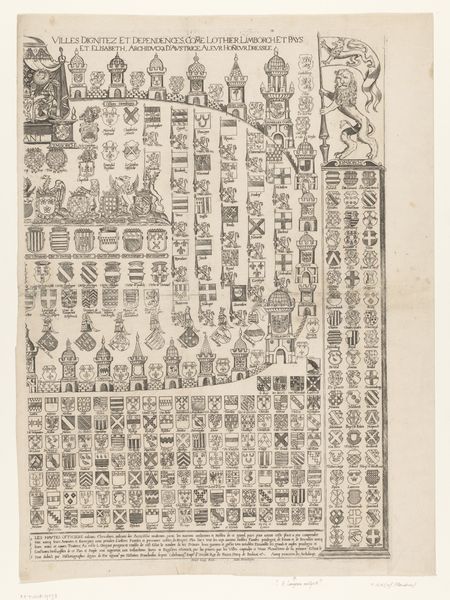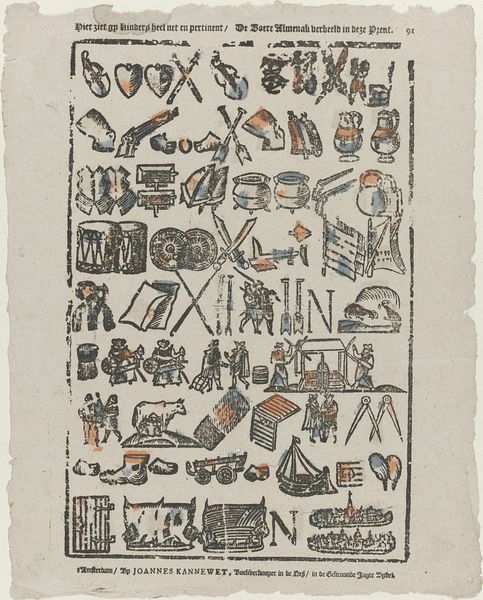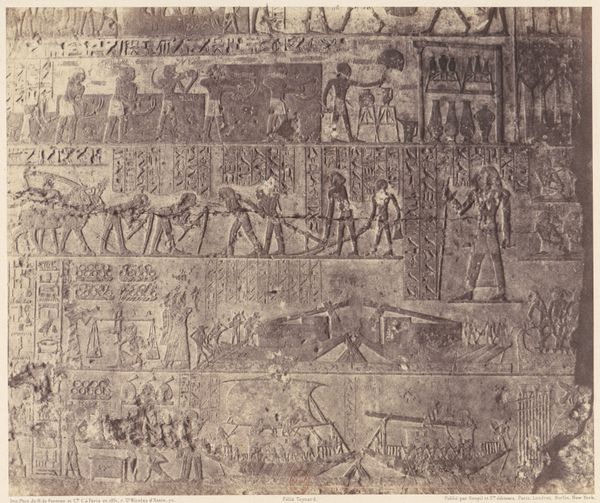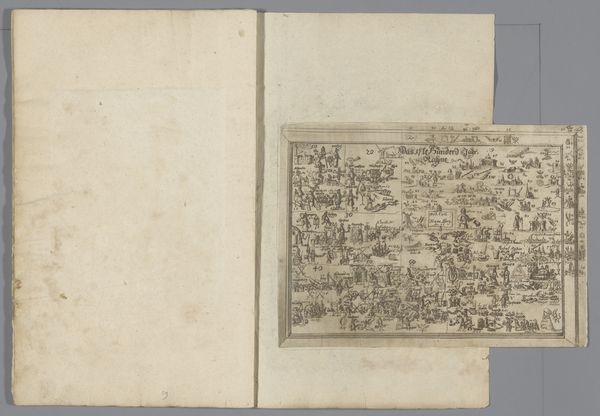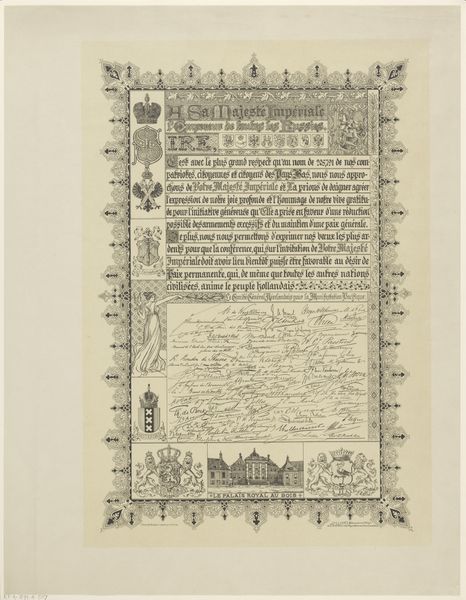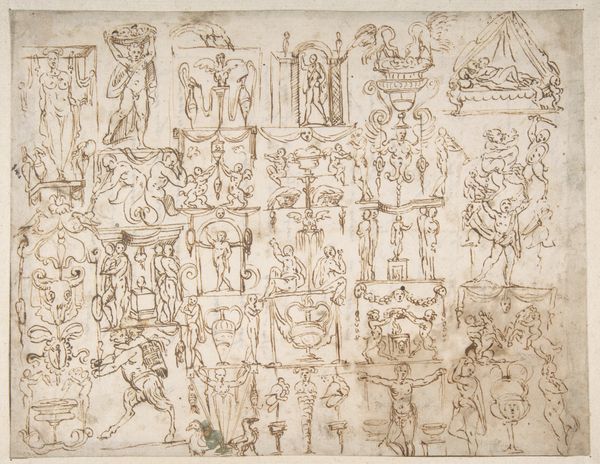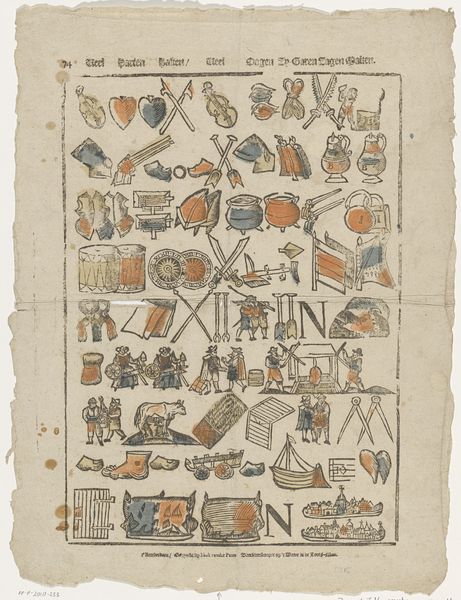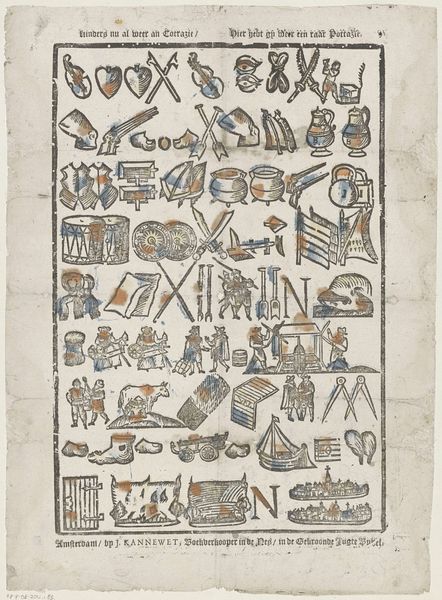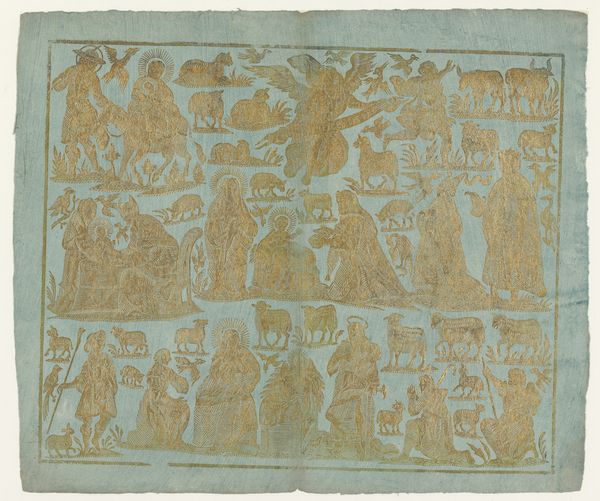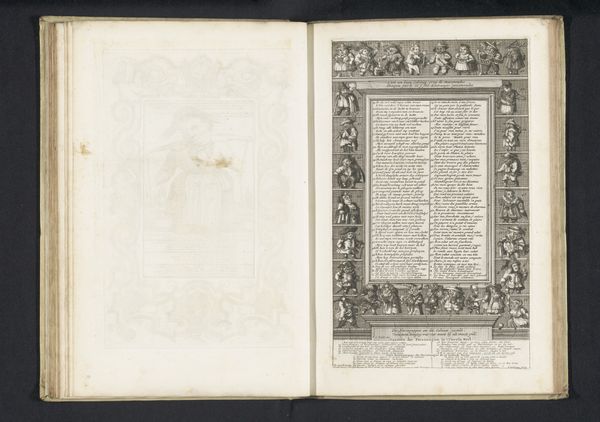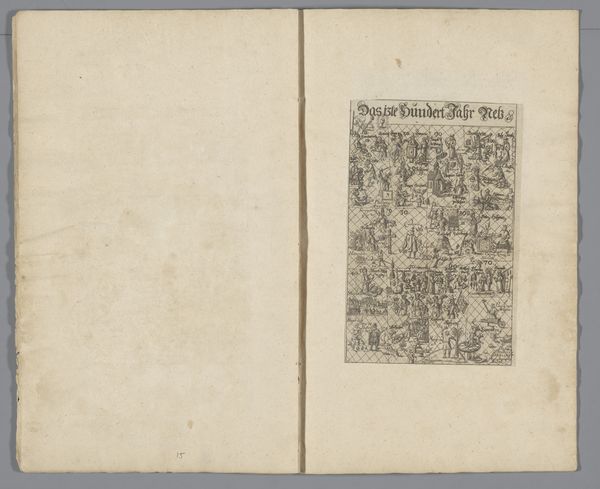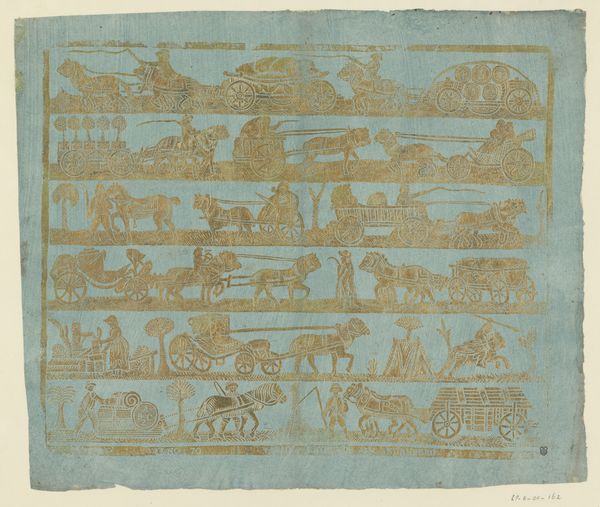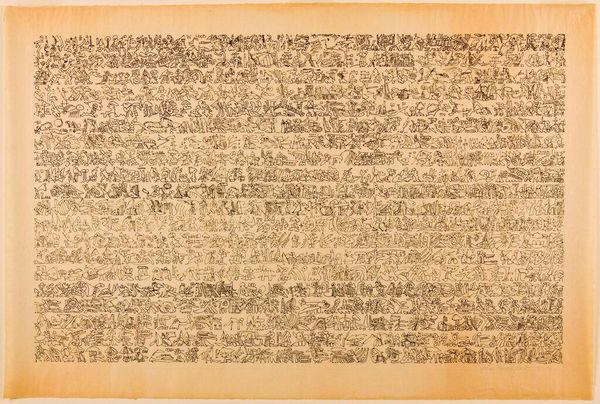
print, etching
#
medieval
# print
#
etching
#
landscape
#
history-painting
Dimensions: 278 mm (height) x 375 mm (width) (bladmaal), 267 mm (height) x 372 mm (width) (billedmaal)
Curator: This is Jost Amman’s "Rektangulær militærlejr med vognborg," created in 1573, an etching depicting a military encampment. The original is held at the Statens Museum for Kunst. Editor: Oh, wow! It's… incredibly busy. Like a swarm of organized chaos in monochrome. There’s a palpable sense of… anxiety, perhaps? All those tiny tents packed together like they’re huddling for protection. Curator: Yes, that dense aggregation of tents speaks volumes about the logistical demands of early modern warfare. Amman's use of etching, a printmaking technique involving acid-etched lines on a metal plate, allows for a highly detailed, reproducible image that could circulate widely. Think of this not just as a landscape or a history painting, but also as an exercise in military logistics, visualizing the sheer quantity of material required to sustain an army in the field. Editor: I find myself wondering about the labor behind it all. Who created the tents, who transported all those cannons? It's not just about battle, is it? Curator: Absolutely. The print allows us to consider the unseen networks of labor and material production that supported military campaigns. This level of detail, made accessible through the medium of print, really democratizes knowledge and invites a broader audience to engage with the realities of war. Editor: I’m taken with the notion of landscape, how it situates this scene…as if Amman’s etching captures more than the military action—it reflects society itself, maybe in transition, defined by its conflicts and logistical strategies. Curator: Indeed, and we, as viewers, are invited to ponder these relationships, not simply as spectators, but as inheritors of this very tangible history etched into metal, pressed onto paper, and preserved for centuries. Editor: Thinking about it now, beyond the anxiety, there’s a stark sort of beauty in that calculated arrangement. It feels almost hopeful, even as it depicts preparations for violence. A structured approach for those involved. Curator: Well, isn’t that often the paradox of military strategy? Order forged from chaos, purpose gleaned from potential destruction. Editor: Perhaps we're not so different centuries later, trying to find form within apparent bedlam. A testament to persistence. Curator: Indeed. Amman provides us with the evidence of how they lived, how they mobilized, and therefore, we begin to imagine, how they thought.
Comments
No comments
Be the first to comment and join the conversation on the ultimate creative platform.
